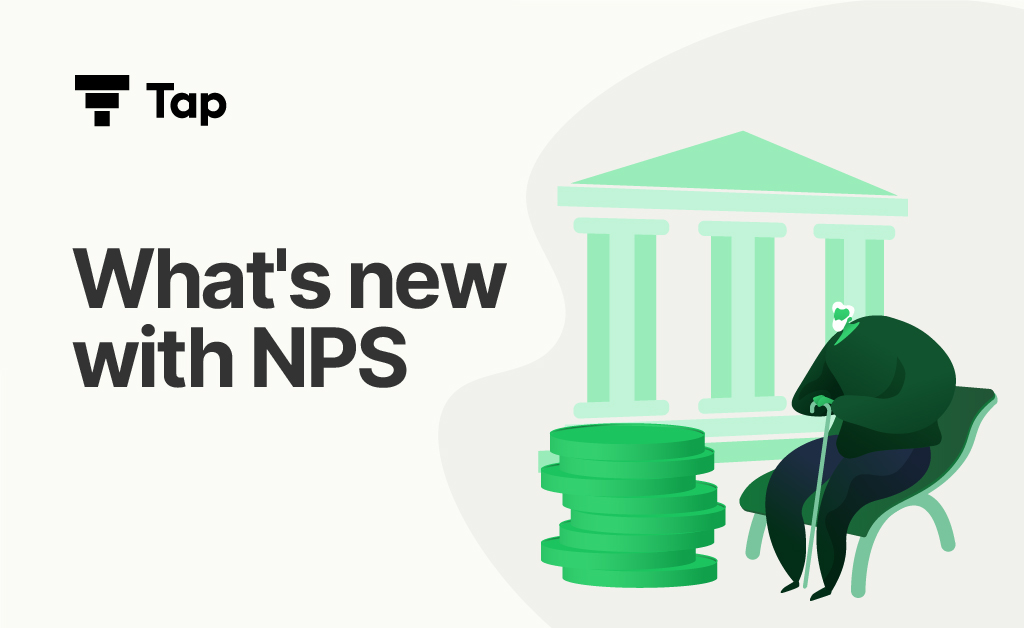What’s new with NPS

The National Pension System (NPS) is a voluntary, long-term retirement savings scheme established by the Government of India. Launched in January 2004 initially for government employees, it was later opened to all Indian citizens between the ages of 18 and 60, subject to Know Your Customer (KYC) norms. The scheme operates under the Pension Fund Regulatory and Development Authority (PFRDA) regulatory oversight.
NPS enables individuals to contribute regularly towards a pension account during their working years to build a substantial corpus to secure a stable income post-retirement. The contributions made by subscribers are invested in various financial instruments, such as equities, government securities, corporate bonds, and alternative assets, managed by Pension Fund Managers (PFMs) appointed by the PFRDA.
Upon reaching retirement age, subscribers can withdraw a portion of the accumulated corpus as a lump sum and use the remaining amount to purchase an annuity, which provides a regular pension income. The scheme offers tax benefits to encourage retirement savings, with contributions eligible for deductions under Section 80C of the Income Tax Act, subject to certain limits.
New Rules and Considerations for Partial Withdrawal from the National Pension System (NPS)
Starting February 1, 2024, the National Pension System (NPS) has implemented new rules regarding partial withdrawals, offering subscribers more flexibility in managing their retirement savings. Understanding these changes and their implications is crucial for NPS members looking to make informed decisions about their financial future.
Eligibility and Limits
To be eligible for partial withdrawal from their NPS account, subscribers must have enrolled for at least three years from their joining date. The amount available for partial withdrawal is capped at 25% of the subscriber’s total contributions in their individual pension account, excluding the employer’s contribution, as of the withdrawal application date. It’s important to note that contribution returns are not eligible for partial withdrawal.
Frequency and Conditions
Subscribers are permitted a maximum of three partial withdrawals throughout their subscription tenure, with a mandatory gap of five years between each withdrawal. However, this restriction does not apply if the withdrawal is made to treat specified illnesses. Only incremental contributions made since the previous withdrawal are allowed for subsequent withdrawals.
New Admissible Reasons for Partial Withdrawals
The updated regulations expand the permissible reasons for partial withdrawals from the NPS, including:
1. Higher Education Expenses: Partial withdrawals can be made to cover the cost of higher education for the subscriber’s children, including legally adopted children.
2. Marriage Expenses: Funds can be withdrawn to finance marriage expenses for the subscriber’s children, including legally adopted children.
3. Home Purchase or Construction: Subscribers can utilise partial withdrawals for purchasing or constructing a residential property in their name or jointly with their legally wedded spouse. However, withdrawals are not permitted if the subscriber already owns a residential property, excluding ancestral property.
4. Treatment of Specified Illnesses: Withdrawals are allowed to treat various illnesses, such as cancer, kidney failure, and COVID-19.
5. Medical and Incidental Expenses: Funds can be withdrawn to cover medical and incidental expenses arising from the subscriber’s disability or incapacitation.
6. Skill Development and Self-Development: Partial withdrawals are permissible for expenses related to skill development, re-skilling, or any other self-development activities.
7. Establishing Ventures or Start-Ups: Subscribers can utilize funds to establish their ventures or start-ups.
Considerations for Subscribers
While the option for partial withdrawal provides flexibility, subscribers must carefully evaluate their immediate financial needs against the long-term objective of securing a stable retirement. The primary aim of the NPS is to provide financial security during retirement, emphasising the importance of maintaining the corpus intact whenever possible.
Decisions regarding partial withdrawals should consider urgent financial necessities, investment opportunities with higher returns, and associated risks. Subscribers are encouraged to prioritise the long-term growth potential of their NPS corpus, ensuring a more financially stable retirement.
The recent amendments to the NPS regulations regarding partial withdrawals offer subscribers greater flexibility in managing their retirement savings. By understanding the eligibility criteria, limits, permissible reasons, and considerations for partial withdrawals, NPS members can make informed decisions aligned with their financial goals and aspirations.
As a government-sponsored pension scheme, the NPS continues to serve as a valuable tool for retirement planning, offering tax benefits and opportunities for long-term wealth accumulation. Subscribers are advised to consult financial experts and weigh the pros and cons before opting for partial withdrawals, ensuring a secure financial future in their retirement years.
